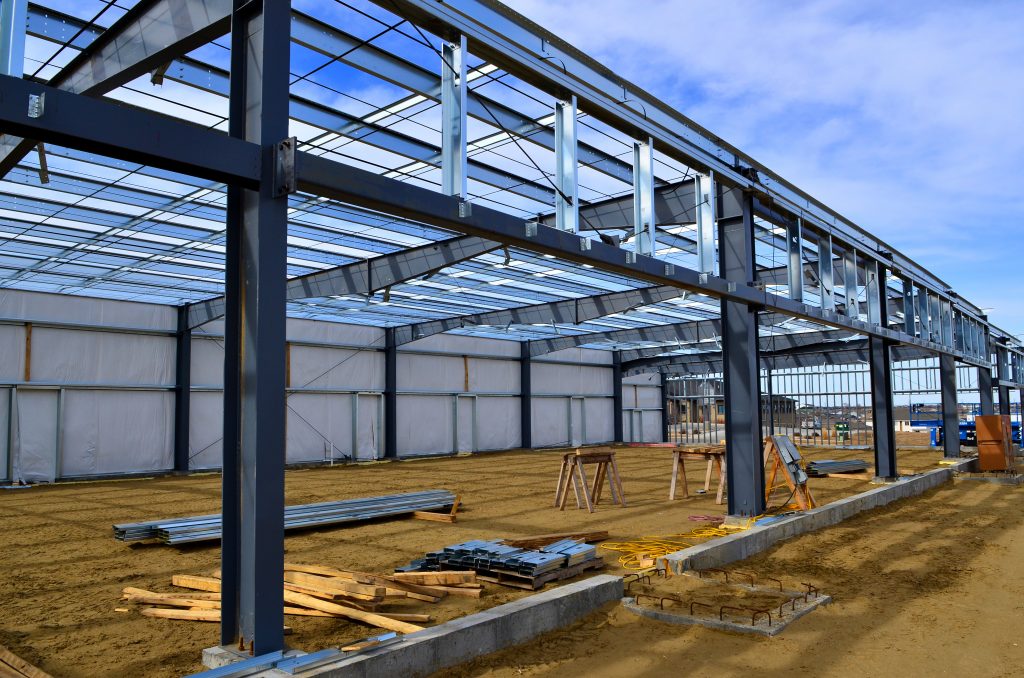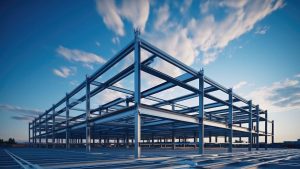As the demand for sustainable construction practices continues to rise, steel buildings have gained popularity for their durability, versatility, and potential energy efficiency benefits. In this blog post, we will explore the topic of energy efficiency in steel buildings, and specifically discuss how National Steel Buildings, a leading provider of steel buildings, incorporates energy-saving features in their designs.
What Makes Steel Buildings Energy Efficient?
Steel buildings offer several inherent properties that contribute to their energy efficiency. For instance, steel has a high strength-to-weight ratio, allowing for lighter building structures with fewer materials. This reduces the energy required for transportation, fabrication, and construction compared to traditional building materials.
National Steel Buildings also designs their buildings with proper insulation, ventilation, and daylighting to minimise energy consumption. High-quality insulation materials can be used to create a tight building envelope, reducing heat transfer and lowering heating and cooling demands. Properly designed ventilation systems can improve indoor air quality while also reducing the energy needed for heating and cooling. Additionally, incorporating ample natural daylight through well-placed windows and skylights can reduce the need for artificial lighting during the day, further reducing energy usage.
Benefits of Energy Efficient Steel Buildings
The energy efficiency features in steel buildings provide numerous benefits, both environmental and economic. Firstly, reducing energy consumption leads to lower greenhouse gas emissions, helping to mitigate climate change. Steel buildings also have a long lifespan, which means they require less frequent replacement and reduce the demand for natural resources.
From an economic perspective, energy efficient steel buildings can result in lower operational costs. National Steel Buildings’ designs can help clients save on heating and cooling costs by reducing energy demands. Over time, these energy cost savings can result in a better return on investment (ROI) for the building owner. Furthermore, energy efficient steel buildings may qualify for incentives or certifications, such as LEED (Leadership in Energy and Environmental Design), which can further enhance the economic benefits.
Factors Affecting Energy Efficiency in Steel Buildings
While steel buildings can be designed to be energy efficient, several factors can impact their performance. Location and climate are critical considerations, as different regions have varying temperature extremes and weather patterns that can affect heating and cooling requirements. Building design and construction techniques also play a role, with proper insulation, air sealing, and HVAC system design being key factors in achieving optimal energy performance. National Steel Buildings employs advanced design techniques to tailor their steel buildings to specific locations and climate conditions, ensuring maximum energy efficiency.
Case Studies and Examples
National Steel Buildings has a track record of providing energy efficient steel buildings for various applications. For instance, they have designed and constructed energy-efficient steel buildings for commercial and industrial purposes, including warehouses, manufacturing facilities, and office spaces. These buildings have been equipped with insulation, ventilation, and daylighting solutions to reduce energy consumption and operational costs.
One notable example is the construction of a LEED-certified steel building for a manufacturing company that reduced their energy consumption by 30% compared to traditional buildings. Another example is the construction of a steel building for a cold storage facility that incorporated high-quality insulation and HVAC systems, resulting in significant energy savings and reduced operational costs.
Conclusion
In conclusion, steel buildings can be designed to be energy efficient, offering environmental and economic benefits. National Steel Buildings is a leading provider of steel buildings that incorporates energy-saving features in their designs, including proper insulation, ventilation, and daylighting solutions. By leveraging the inherent properties of steel and employing advanced design techniques, National Steel Buildings creates sustainable and cost-effective solutions for various applications. If you’re considering a steel building for your next construction project, reach out to National Steel Buildings for expert guidance on energy-efficient designs. Invest in an energy-efficient steel building today and reap the benefits for years to come.




